-
EXECUTIVE SUMMARY
-
MARKET INTRODUCTION
-
Definition
-
Scope of the Study
- Research Objective
- Assumptions
- Limitations
-
RESEARCH METHODOLOGY
-
Overview
-
Data Mining
-
Secondary Research
-
Primary Research
- Primary Interviews and Information Gathering Process
- Breakdown of Primary Respondents
-
Forecasting Modality
-
Market Size Estimation
- Bottom-Up Approach
- Top-Down Approach
-
Data Triangulation
-
Validation
-
MARKET DYNAMICS
-
Overview
-
Drivers
-
Restraints
-
Opportunities
-
MARKET FACTOR ANALYSIS
-
Value Chain Analysis
-
Porter’s Five Forces Analysis
- Bargaining Power of Suppliers
- Bargaining Power of Buyers
- Threat of New Entrants
- Threat of Substitutes
- Intensity of Rivalry
-
COVID-19 Impact Analysis
- Market Impact Analysis
- Regional Impact
- Opportunity and Threat Analysis
-
GLOBAL DISPOSABLE HYGIENE PRODUCTS MARKET, BY PRODUCT TYPE
-
Overview
-
Wipes
-
Diapers
-
Feminine Hygiene Products
-
GLOBAL DISPOSABLE HYGIENE PRODUCTS MARKET, BY DISTRIBUTION CHANNEL
-
Overview
-
Supermarkets/Hypermarkets
-
Pharmacy Stores
-
Online Stores
-
Others
-
GLOBAL DISPOSABLE HYGIENE PRODUCTS MARKET, BY REGION
-
Overview
-
North America
- US
- Canada
-
Europe
- Germany
- France
- UK
- Italy
- Spain
- Rest of Europe
-
Asia-Pacific
- China
- India
- Japan
- South Korea
- Australia
- Rest of Asia-Pacific
-
Rest of the World
- Middle East
- Africa
- Latin America
-
COMPETITIVE LANDSCAPE
-
Overview
-
Competitive Analysis
-
Market Share Analysis
-
Major Growth Strategy in the Global Disposable Hygiene Products Market,
-
Competitive Benchmarking
-
Leading Players in Terms of Number of Developments in the Global Disposable Hygiene Products Market,
-
Key developments and Growth Strategies
- New Distribution Channel Launch/Service Deployment
- Merger & Acquisitions
- Joint Ventures
-
Major Players Financial Matrix
- Sales & Operating Income, 2022
- Major Players R&D Expenditure. 2022
-
COMPANY PROFILES
-
The Procter & Gamble Company (U.S.)
- Company Overview
- Financial Overview
- Products Offered
- Key Developments
- SWOT Analysis
- Key Strategies
-
KIMBERLY-THE EDGEWELL PERSONAL CARE COMPANY (U.S.) CORPORATION (U.S.)
- Company Overview
- Financial Overview
- Products Offered
- Key Developments
- SWOT Analysis
- Key Strategies
-
UNICHARM CORPORATION (JAPAN)
- Company Overview
- Financial Overview
- Products Offered
- Key Developments
- SWOT Analysis
- Key Strategies
-
Essity AB (Sweden)
- Company Overview
- Financial Overview
- Products Offered
- Key Developments
- SWOT Analysis
- Key Strategies
-
Hengan International Group Company Limited (China)
- Company Overview
- Financial Overview
- Products Offered
- Key Developments
- SWOT Analysis
- Key Strategies
-
Ontex BV (Belgium)
- Company Overview
- Financial Overview
- Products Offered
- Key Developments
- SWOT Analysis
- Key Strategies
-
DPL (ISRAEL)
- Company Overview
- Financial Overview
- Products Offered
- Key Developments
- SWOT Analysis
- Key Strategies
-
Fujian Time and Tianhe Industrial Co., Ltd. (China)
- Company Overview
- Financial Overview
- Products Offered
- Key Developments
- SWOT Analysis
- Key Strategies
-
The Edgewell Personal Care Company (U.S.)
- Company Overview
- Financial Overview
- Products Offered
- Key Developments
- SWOT Analysis
- Key Strategies
-
Dispowear Sterite Company (India)
- Company Overview
- Financial Overview
- Products Offered
- Key Developments
- SWOT Analysis
- Key Strategies
-
APPENDIX
-
References
-
Related Reports
-
-
LIST OF TABLES
-
GLOBAL DISPOSABLE HYGIENE PRODUCTS MARKET, SYNOPSIS, 2025–2034
-
GLOBAL DISPOSABLE HYGIENE PRODUCTS MARKET, ESTIMATES & FORECAST, 2025–2034 (USD BILLION)
-
GLOBAL DISPOSABLE HYGIENE PRODUCTS MARKET, BY PRODUCT TYPE, 2025–2034 (USD BILLION)
-
GLOBAL DISPOSABLE HYGIENE PRODUCTS MARKET, BY DISTRIBUTION CHANNEL, 2025–2034 (USD BILLION)
-
NORTH AMERICA: DISPOSABLE HYGIENE PRODUCTS MARKET, BY PRODUCT TYPE, 2025–2034 (USD BILLION)
-
NORTH AMERICA: DISPOSABLE HYGIENE PRODUCTS MARKET, BY DISTRIBUTION CHANNEL, 2025–2034 (USD BILLION)
-
US: DISPOSABLE HYGIENE PRODUCTS MARKET, BY PRODUCT TYPE, 2025–2034 (USD BILLION)
-
US: DISPOSABLE HYGIENE PRODUCTS MARKET, BY DISTRIBUTION CHANNEL, 2025–2034 (USD BILLION)
-
CANADA: DISPOSABLE HYGIENE PRODUCTS MARKET, BY PRODUCT TYPE, 2025–2034 (USD BILLION)
-
CANADA: DISPOSABLE HYGIENE PRODUCTS MARKET, BY DISTRIBUTION CHANNEL, 2025–2034 (USD BILLION)
-
EUROPE: DISPOSABLE HYGIENE PRODUCTS MARKET, BY PRODUCT TYPE, 2025–2034 (USD BILLION)
-
EUROPE: DISPOSABLE HYGIENE PRODUCTS MARKET, BY DISTRIBUTION CHANNEL, 2025–2034 (USD BILLION)
-
GERMANY: DISPOSABLE HYGIENE PRODUCTS MARKET, BY PRODUCT TYPE, 2025–2034 (USD BILLION)
-
GERMANY: DISPOSABLE HYGIENE PRODUCTS MARKET, BY DISTRIBUTION CHANNEL, 2025–2034 (USD BILLION)
-
FRANCE: DISPOSABLE HYGIENE PRODUCTS MARKET, BY PRODUCT TYPE, 2025–2034 (USD BILLION)
-
FRANCE: DISPOSABLE HYGIENE PRODUCTS MARKET, BY DISTRIBUTION CHANNEL, 2025–2034 (USD BILLION)
-
ITALY: DISPOSABLE HYGIENE PRODUCTS MARKET, BY PRODUCT TYPE, 2025–2034 (USD BILLION)
-
ITALY: DISPOSABLE HYGIENE PRODUCTS MARKET, BY DISTRIBUTION CHANNEL, 2025–2034 (USD BILLION)
-
SPAIN: DISPOSABLE HYGIENE PRODUCTS MARKET, BY PRODUCT TYPE, 2025–2034 (USD BILLION)
-
SPAIN: DISPOSABLE HYGIENE PRODUCTS MARKET, BY DISTRIBUTION CHANNEL, 2025–2034 (USD BILLION)
-
UK: DISPOSABLE HYGIENE PRODUCTS MARKET, BY PRODUCT TYPE, 2025–2034 (USD BILLION)
-
UK: DISPOSABLE HYGIENE PRODUCTS MARKET, BY END UER, 2025–2034 (USD BILLION)
-
REST OF EUROPE: DISPOSABLE HYGIENE PRODUCTS MARKET, BY PRODUCT TYPE, 2025–2034 (USD BILLION)
-
REST OF EUROPE: DISPOSABLE HYGIENE PRODUCTS MARKET, BY DISTRIBUTION CHANNEL, 2025–2034 (USD BILLION)
-
ASIA-PACIFIC: DISPOSABLE HYGIENE PRODUCTS MARKET, BY PRODUCT TYPE, 2025–2034 (USD BILLION)
-
ASIA-PACIFIC: DISPOSABLE HYGIENE PRODUCTS MARKET, BY DISTRIBUTION CHANNEL, 2025–2034 (USD BILLION)
-
JAPAN: DISPOSABLE HYGIENE PRODUCTS MARKET, BY PRODUCT TYPE, 2025–2034 (USD BILLION)
-
JAPAN: DISPOSABLE HYGIENE PRODUCTS MARKET, BY DISTRIBUTION CHANNEL, 2025–2034 (USD BILLION)
-
CHINA: DISPOSABLE HYGIENE PRODUCTS MARKET, BY PRODUCT TYPE, 2025–2034 (USD BILLION)
-
CHINA: DISPOSABLE HYGIENE PRODUCTS MARKET, BY DISTRIBUTION CHANNEL, 2025–2034 (USD BILLION)
-
INDIA: DISPOSABLE HYGIENE PRODUCTS MARKET, BY PRODUCT TYPE, 2025–2034 (USD BILLION)
-
INDIA: DISPOSABLE HYGIENE PRODUCTS MARKET, BY DISTRIBUTION CHANNEL, 2025–2034 (USD BILLION)
-
AUSTRALIA: DISPOSABLE HYGIENE PRODUCTS MARKET, BY PRODUCT TYPE, 2025–2034 (USD BILLION)
-
AUSTRALIA: DISPOSABLE HYGIENE PRODUCTS MARKET, BY DISTRIBUTION CHANNEL, 2025–2034 (USD BILLION)
-
SOUTH KOREA: DISPOSABLE HYGIENE PRODUCTS MARKET, BY PRODUCT TYPE, 2025–2034 (USD BILLION)
-
SOUTH KOREA: DISPOSABLE HYGIENE PRODUCTS MARKET, BY DISTRIBUTION CHANNEL, 2025–2034 (USD BILLION)
-
REST OF ASIA-PACIFIC: DISPOSABLE HYGIENE PRODUCTS MARKET, BY PRODUCT TYPE, 2025–2034 (USD BILLION)
-
REST OF ASIA-PACIFIC: DISPOSABLE HYGIENE PRODUCTS MARKET, BY DISTRIBUTION CHANNEL, 2025–2034 (USD BILLION)
-
REST OF THE WORLD: DISPOSABLE HYGIENE PRODUCTS MARKET, BY PRODUCT TYPE, 2025–2034 (USD BILLION)
-
REST OF THE WORLD: DISPOSABLE HYGIENE PRODUCTS MARKET, BY DISTRIBUTION CHANNEL, 2025–2034 (USD BILLION)
-
MIDDLE EAST: DISPOSABLE HYGIENE PRODUCTS MARKET, BY PRODUCT TYPE, 2025–2034 (USD BILLION)
-
MIDDLE EAST: DISPOSABLE HYGIENE PRODUCTS MARKET, BY DISTRIBUTION CHANNEL, 2025–2034 (USD BILLION)
-
AFRICA: DISPOSABLE HYGIENE PRODUCTS MARKET, BY PRODUCT TYPE, 2025–2034 (USD BILLION)
-
AFRICA: DISPOSABLE HYGIENE PRODUCTS MARKET, BY DISTRIBUTION CHANNEL, 2025–2034 (USD BILLION)
-
LATIN AMERICA: DISPOSABLE HYGIENE PRODUCTS MARKET, BY PRODUCT TYPE, 2025–2034 (USD BILLION)
-
LATIN AMERICA: DISPOSABLE HYGIENE PRODUCTS MARKET, BY DISTRIBUTION CHANNEL, 2025–2034 (USD BILLION)
-
LIST OF FIGURES
-
RESEARCH PROCESS
-
MARKET STRUCTURE FOR THE GLOBAL DISPOSABLE HYGIENE PRODUCTS MARKET
-
MARKET DYNAMICS FOR THE GLOBAL DISPOSABLE HYGIENE PRODUCTS MARKET
-
GLOBAL DISPOSABLE HYGIENE PRODUCTS MARKET, SHARE (%), BY PRODUCT TYPE, 2025
-
GLOBAL DISPOSABLE HYGIENE PRODUCTS MARKET, SHARE (%), BY DISTRIBUTION CHANNEL, 2025
-
GLOBAL DISPOSABLE HYGIENE PRODUCTS MARKET, SHARE (%), BY REGION, 2025
-
NORTH AMERICA: DISPOSABLE HYGIENE PRODUCTS MARKET, SHARE (%), BY REGION, 2025
-
EUROPE: DISPOSABLE HYGIENE PRODUCTS MARKET, SHARE (%), BY REGION, 2025
-
ASIA-PACIFIC: DISPOSABLE HYGIENE PRODUCTS MARKET, SHARE (%), BY REGION, 2025
-
REST OF THE WORLD: DISPOSABLE HYGIENE PRODUCTS MARKET, SHARE (%), BY REGION, 2025
-
GLOBAL DISPOSABLE HYGIENE PRODUCTS MARKET: COMPANY SHARE ANALYSIS, 2025 (%)
-
THE PROCTER & GAMBLE COMPANY (U.S.): FINANCIAL OVERVIEW SNAPSHOT
-
THE PROCTER & GAMBLE COMPANY (U.S.): SWOT ANALYSIS
-
KIMBERLY-THE EDGEWELL PERSONAL CARE COMPANY (U.S.) CORPORATION (U.S.): FINANCIAL OVERVIEW SNAPSHOT
-
KIMBERLY-THE EDGEWELL PERSONAL CARE COMPANY (U.S.) CORPORATION (U.S.): SWOT ANALYSIS
-
UNICHARM CORPORATION (JAPAN): FINANCIAL OVERVIEW SNAPSHOT
-
UNICHARM CORPORATION (JAPAN): SWOT ANALYSIS
-
ESSITY AB (SWEDEN): FINANCIAL OVERVIEW SNAPSHOT
-
ESSITY AB (SWEDEN): SWOT ANALYSIS
-
HENGAN INTERNATIONAL GROUP COMPANY LIMITED (CHINA): FINANCIAL OVERVIEW SNAPSHOT
-
HENGAN INTERNATIONAL GROUP COMPANY LIMITED (CHINA): SWOT ANALYSIS
-
ONTEX BV (BELGIUM): FINANCIAL OVERVIEW SNAPSHOT
-
ONTEX BV (BELGIUM): SWOT ANALYSIS
-
DPL (ISRAEL): FINANCIAL OVERVIEW SNAPSHOT
-
DPL (ISRAEL): SWOT ANALYSIS
-
FUJIAN TIME AND TIANHE INDUSTRIAL CO., LTD. (CHINA): FINANCIAL OVERVIEW SNAPSHOT
-
FUJIAN TIME AND TIANHE INDUSTRIAL CO., LTD. (CHINA): SWOT ANALYSIS
-
THE EDGEWELL PERSONAL CARE COMPANY (U.S.): FINANCIAL OVERVIEW SNAPSHOT
-
THE EDGEWELL PERSONAL CARE COMPANY (U.S.): SWOT ANALYSIS
-
DISPOWEAR STERITE COMPANY (INDIA): FINANCIAL OVERVIEW SNAPSHOT
-
DISPOWEAR STERITE COMPANY (INDIA): SWOT ANALYSIS
-
"


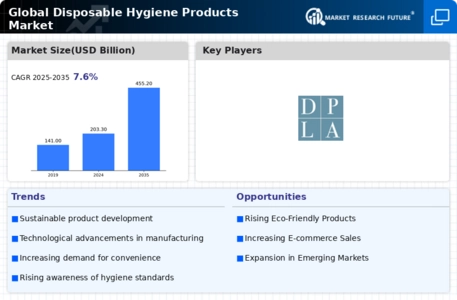
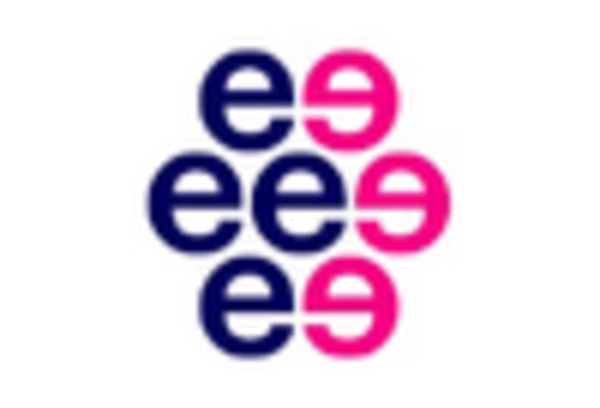
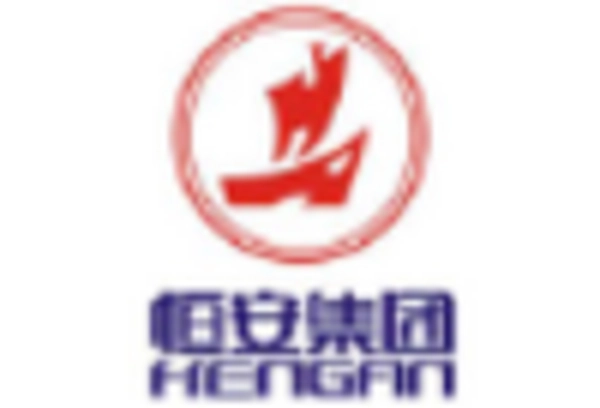

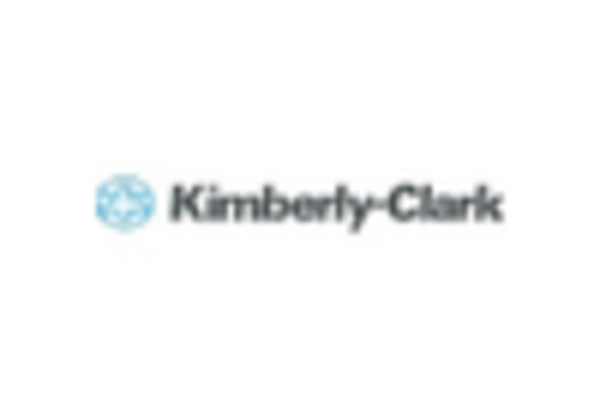
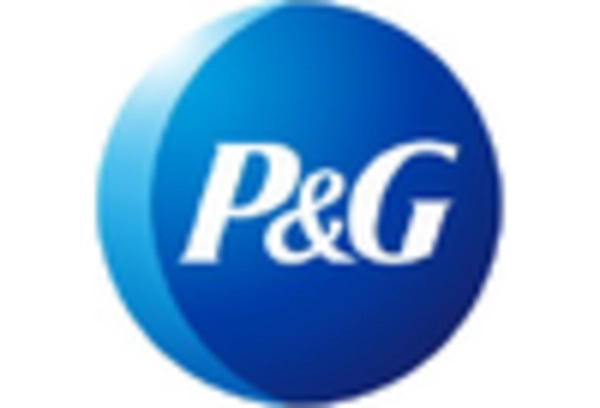
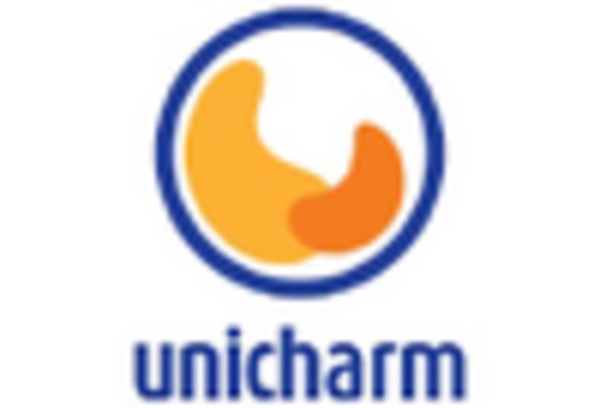









Leave a Comment